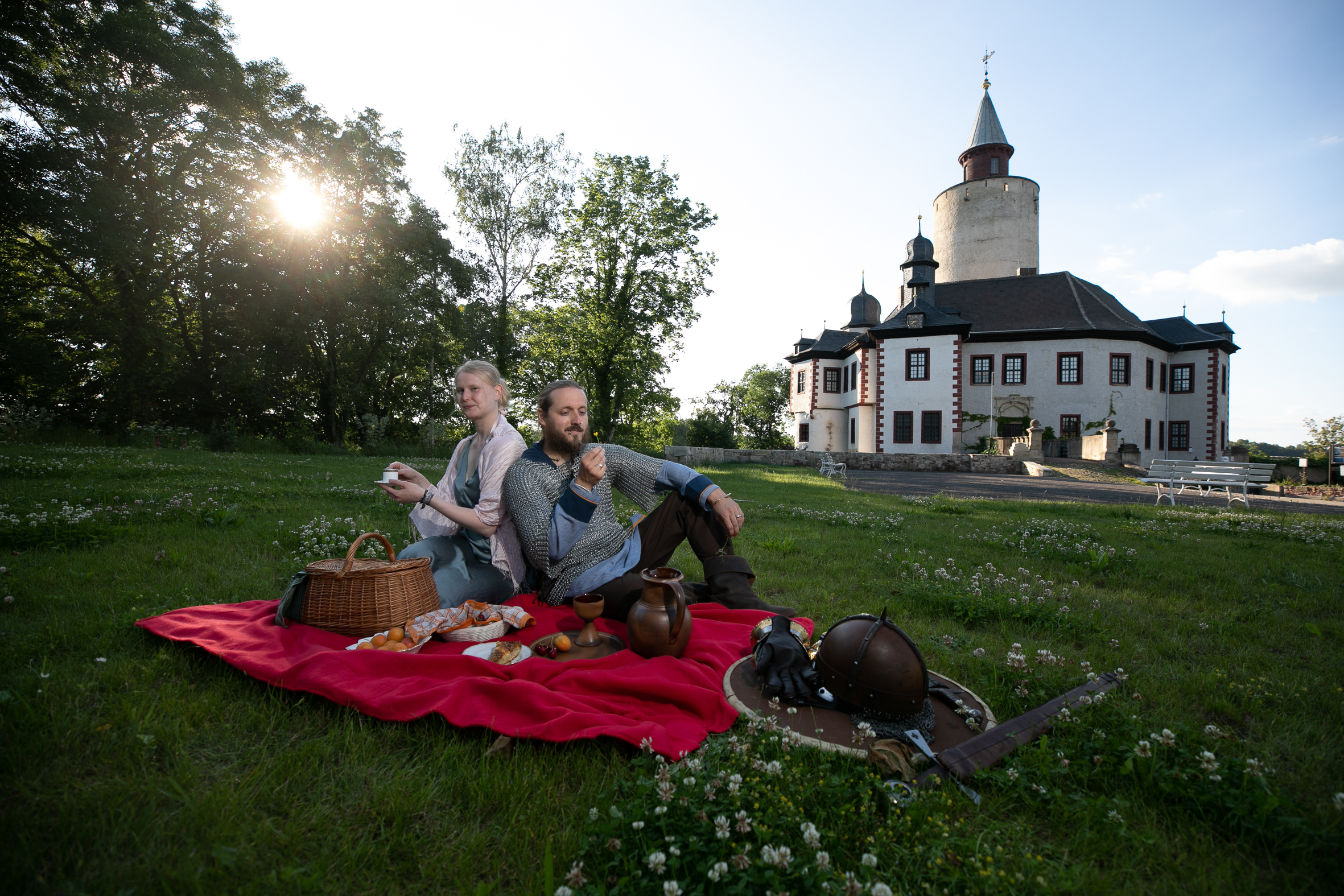Since the sixth century the Slavic settlement area expanded to the rivers Elbe and Saale. In this time Slavic tribes settled in today’s County of Altenburg, too. In the following time Germanic farmers, who already had settled in the region, were absorbed by the Slavic tribes.
The Slavic tribe, which settled most in the West, was called Sorbs. Their settlement area reached from the upper river Mulde and the river Elster to the river Saale. They structured their land with the help of natural forest borders in so-called “Gaue” (districts). In the centre of a Gau there was a Gauburg, a fortress. The county of Altenburg belonged to the districts Geraha and Plisni. Close to the villages Löbichau, Nöbdenitz, Vollmershain and Thonhausen there was the border between Plisni and Geraha.
Place names and the form of a village reveal Slavic settlement
Almost 70 percent of all place names in the County of Altenburg have Slavic roots. Typical for Slavic place names are their endings: Former Slavic endings as –ici und -ovici are preserved as –itz (e.g. Raudenitz, Sommeritz) and –witz (e.g. Meuselwitz) in today’s place names, while villages that once ended on –ovo, -ova and –ove, today end with –a and –au, as for example Lohma, Kosma and Löbichau. Slavic place names that originally had the endings –ine, -ina and –ino, end today normally on –eu. With this knowledge today’s villages’ origins can be traced back by their names. While the villages Nischwitz, Nitschka and Zschernitzsch obviously have Slavic roots, their neighbour villages Grünberg, Heyersdorf and Weißbach originally were Germanic settlements.
Also the form of a village can give a hint on its origin. While the German settlements in the region often are a kilometre long row of houses and farms, the Slavic founded villages have a rather round centre, called „Rundling“.
Excavation in boxes
A part of Posterstein castle’s permanent exhibition deals with the region’s archaeology. To the collection belong for example potsherds from the Neolithic, hand-axes and querns from the stone-age as well as different other tools. As a part of the museum’s children’s program, children can learn about archaeology and try to be archaeologists themselves in the museum. With trowel and pencil they can search for archaeological artefacts in boxes with sand. Have they found something, they identify their find with the help of the museum’s collection. Afterwards they’ll write an archaeological report on their find. The program lasts about half an hour and is dedicated to children between eight and twelve years, for example for school classes and as a part of a birthday party in the museum.
Slavic finds (picture: Museum Burg Posterstein)
Current archaeological research in the County of Altenburg
In spring 2012, from March 4th to April 30th, Museum Burg Posterstein will show a special exhibition on recent archaeological research in the County of Altenburg. The focus will lie on the last years’ finds and the exhibition will be made in co-operation with the Thuringian department for archaeology and preservation of monuments (Thüringischen Landesamt für Archäologie und Denkmalpflege).
(by Marlene Hofmann)


